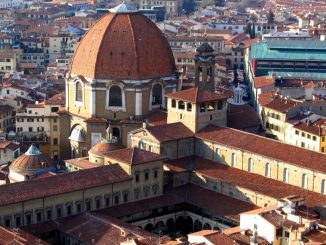The squares of Rome are what many visitors associate with the city. In essence, they are a part of what gives the modern capital city its character. The inhabitants of Rome use the Piazzas as meet up points, entertainment, general socialising, parties and festivals or the daily ‘happy hour’. Situated on Capitol Hill, Piazza del Campidoglio is where the Government sits. Meanwhile, Piazza Venezia is considered the heart of Rome, while Piazza Navona is famous for its magnificent Baroque buildings, and Piazza di Spagna is known for being the home of the Spanish Steps. Those visiting St Peter’s Basilica first pass through St Peter’s Square. In all, the Piazzas tell the story of Rome that spans over a millennia of history.
Over 200 chapels and 19 basilicas are encircled by the ancient Aurelian Walls. The most notable of the basilicas are St Peter’s, the biggest on earth; St John in Lateran, the world’s oldest church, where the bishop used to live; and Santa Maria Maggiore. A number of the chapels date from early Christianity, when they originated as centres of protection for believers who were escaping persecution. These religious refugees met in buildings which were termed domus ecclesiae. As the years wore on, churches grew up around these buildings which were over the centuries altered, renovated or in some cases completely rebuilt.
The Roman Colosseum took eight years to built and was finally finished in 80 AD. It had a 55,000 capacity, and seats were organised according to the status of those sitting on them. It is over 600 feet long and over 500 feet wide. Beside the Colosseum is the 80 feet Arch of Constantine, which dates from the early 4th century. Emperor Vespasian, who originally commissioned the building of the Colosseum, directed that it be constructed where the despot Nero once resided, to display his contempt for the former Emperor. Within the Colosseum’s walls, Gladiators fought to the death and battling wild animals were also put on show.
The Roman Forum was the social and commercial heart of ancient Rome. Some of the capital’s most significant structures for example the Roman Forum Rostra and the Arch of Septimius Severus – were built here. The decoration of the triple arch honoured Rome’s achievements in numerous battles and the Rostra remembered the battleships that had been claimed from adversaries. The Roman Forum was highly decorated with beautiful monuments and buildings, such as the Temple of Saturn, the church of San Luca e Martina, the Arch of Titus and the Temple of Vesta, which were connected to each other by the Sacra Via.
Today the Roman Pantheon, dating from the 2nd century AD, is the most complete ancient structure still standing. In ancient times, it was the most important building in the city of Rome, as it stood as a pagan temple honouring Roman gods. Today, it is difficult to determine the manner in which the faithful worshipped, as the layout differs so much from other Roman temples. We have the Byzantine Emperor Phocas to thank for its extraordinary state of preservation, as he gifted it to Pope Boniface the VIII in the 7th century. Subsequently it became a church, meaning it has been actively used ever since its construction.




